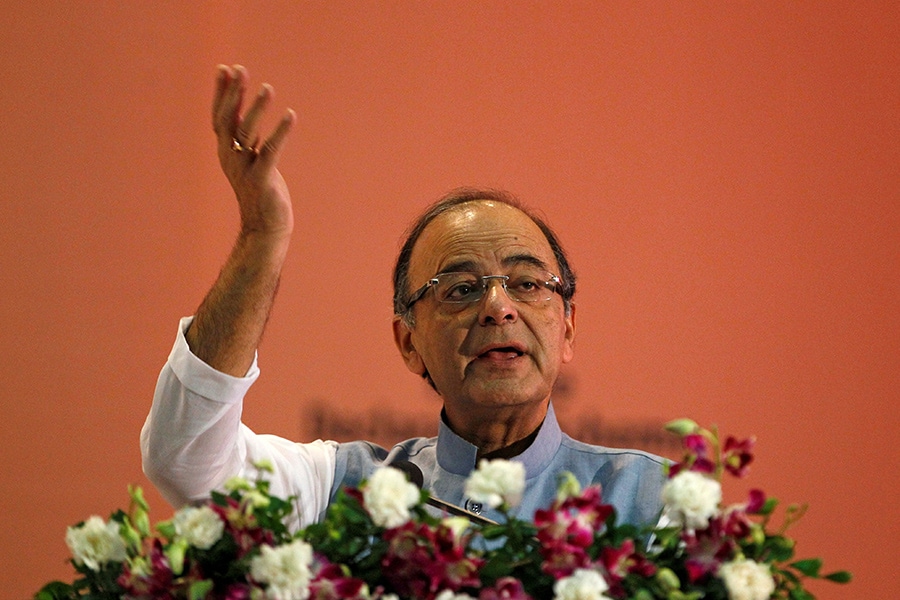
Govt keen to roll out GST on July 1: Finance Minister Arun Jaitley
While the entire exercise of division of work administratively between the Centre and the States has been done, there are 9 different regulations needed, of which 4 are approved by the council

Image: Amit Dave / Reuters
Finance Minister Arun Jaitley said that the government is keen to roll out the biggest tax reform GST on July 1. “It looks likely that we roll the GST on July 1 and why I say likely is that while the entire exercise of division of work administratively between the Centre and the States has been done, we need to form 9 different regulations, of which 4 are approved by the council where marginal changes may be required. For the other 5, the drafts are being prepared and they will be circulated to the state,” he said, addressing a packed audience at the 12th edition of CNBC TV18's Indian Business Leader Awards held in Delhi, where visionaries that have led India’s glorious journey from various walks of life were felicitated. “We are meeting on March 31, hopefully those regulations are approved,” said Jaitley.
Implementation of GST will make goods and services cheaper and tax evasion difficult. “The legislative departments have to do the final corrections….. most of the exercise has been completed in the last 2-3 days and people have been working almost round the clock. It goes for presidential assent. Hopefully by the early next week it should be introduced in the Parliament,” said Jaitley.
Earlier this week, the Cabinet has cleared the four GST related bills and these include Central Goods and Services Tax Bill 2017, the Integrated Goods and Services Tax Bill 2017, the Union Territory Goods and Services Tax Bill 2017 and the Goods and Services Tax (Compensation to the States) Bill. The State Goods and Service Tax is slated to go before each of state assemblies.
So, when will there will be clarity on the rates? “After the 31st meeting, our experts who have been assisting the council will start working on the rate structure,” said Jaitley. In the final GST rates, a 4-tier tax structure is fixed at 5%, 12%, 18% and 28%. “We will have to make a discretion on certain categories. For instance, certain items that actually fall under the luxury category like television and refrigerator are now used even by average people. We will have to take a call on which category we put them in,” said Jaitley. And, what happens to “area based exemptions”? “If you want the benefit of all the input credit etc, in most of those cases, taxes will have to paid, along with the provision for an immediate refund,” said Jaitley.
On mounting NPAs, Jaitley said that even as the amounts are large, “they are restricted” as the “problem of big NPAs is confined to essentially to at best 50 companies that need to be resolved. He also indicated that there may be a new policy on NPA that may come into effect over the next few days and the RBI and the government are working towards it. As per industry reports, the bad loans in the country have risen up from Rs 261,843cr by 135 percent in last two years and it is set to rise as a host of small and medium enterprises are struggling to repay their loans after the government adopted demonetisation move on November 8 last year.





